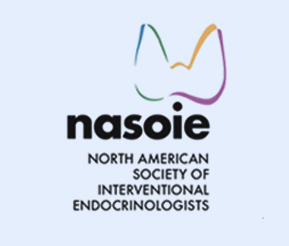Research
Publications by NASOIE members
Original Research
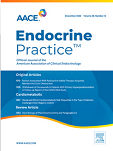
September
2023
Effect of Ultrasound Guided Laser Ablation Therapy on Symptomatic Benign Thyroid Nodules, using EchoLaser, results of a pilot study in the US
The pilot study evaluates the efficacy of a single ultrasound-guided laser ablation treatment in an outpatient setting for symptomatic benign thyroid nodules, offering an alternative to traditional surgical methods.
Johnson Thomas MD, Gregory A. Ledger, Tracy Haertling

July
2023
Radiofrequency Ablation of Cervical Thyroid Cancer Metastases—Experience of Endocrinology Practices in the United States
To evaluate the efficacy RFA for the treatment of cervical recurrence/persistence of PTC in the United States.
Shahzad Ahmad, Jules Aljammal, Ian Orozco, Sheharyar Raashid, Fizza Zulfiqar, Sean P Nikravan, Iram Hussain

November
2022
Radiofrequency Ablation Performed By Endocrinologists Is A Viable Treatment Option For Recurrent Thyroid Cancer In The Outpatient Community Setting In The United States
To determine if radiofrequency ablation (RFA) performed by endocrinologists for recurrent thyroid cancer in the neck is a treatment option in the outpatient community setting in the USA.
Shahzad Ahmad, Jules Aljammal, Ian James Orozco, Sean P Nikravan, Fizza Zulfiqar, Sheharyar Raashid, Iram Hussain

August
2021
Safety and Efficacy of Radiofrequency Ablation of Thyroid Nodules—Expanding Treatment Options in the United States
Iram Hussain, Fizza Zulfiqar, Xilong Li, Shahzad Ahmad, Jules Aljammal

August
2015
Health-Related Quality of Life After Percutaneous Radiofrequency Ablation of Cold, Solid, Benign Thyroid Nodules: A 2-Year Follow-Up Study in 40 Patients
We studied the impact of radiofrequency ablation (RFA) on health-related quality of life (HRQL) in patients with benign thyroid nodules (TN) in a 2-year follow-up.
RobertoValcavi MD, Petros Tsamatropoulos MD

November
2012
Long-Term Effectiveness of Ultrasound-Guided Laser Ablation of Hyperfunctioning Parathyroid Adenomas: Present and Future Perspectives
Although surgery is the first-choice treatment of primary hyperparathyroidism (pHPT), some patients present with contraindications or refuse surgery. Data from alternative nonsurgical therapies are inconclusive. To study the long-term efficacy of laser ablation in the treatment of pHPT, we retrospectively reviewed six cases of laser-treated patients.
Massimiliano Andrioli, Fabrizio Riganti, Claudio Maurizio Pacella1 and Roberto Valcavi

January
2012
Pathological Findings of Thyroid Nodules After Percutaneous Laser Ablation
Ultrasound (US)-guided percutaneous laser ablation (LA) of benign thyroid nodules may be a potential alternative to surgery in patients with compressive symptoms, at high surgical risk, or in patients who refuse to undergo surgery.
Simonetta Piana, Fabrizio Riganti, Elisabetta Froio, Massimiliano Andrioli, Claudio M. Pacella & Roberto Valcavi
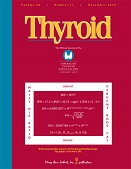
November
2010
Percutaneous Laser Ablation of Cold Benign Thyroid Nodules: A 3-Year Follow-Up Study in 122 Patients
Percutaneous laser ablation (PLA) is a proposed therapeutic procedure for the management of benign thyroid nodules. However, long-term results are unknown. The aim of this study was to evaluate retrospectively the safety and effects of PLA treatment in patients with benign nonfunctioning thyroid nodules in a 3-year follow-up.
Roberto Valcavi, Fabrizio Riganti, Angelo Bertani, Debora Formisano, and Claudio M. Pacella

May
2004
Ultrasound-Guided Percutaneous Ethanol Injection Therapy in Thyroid Cystic Nodules
To provide an overview of ultrasound (US)-guided percutaneous ethanol injection (PEI) therapy for thyroid cystic nodules and discuss the practical and technical details.
Roberto Valcavi MD & Andrea Frasoldati MD, PhD
Case Reports
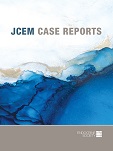
June
2023
Hyperthyroidism Due to Graves Disease After Radiofrequency Ablation
Management options for benign, autonomously functioning, and malignant thyroid nodules were limited to surgery or targeting by radioactive iodine before the availability of radiofrequency ablation (RFA). Despite being a relatively new technique, RFA may be favored for patients of high surgical risk, and for those who wish to avoid hypothyroidism. Although insurance coverage for the procedure can be a significant barrier, several groups of investigators have shown improved quality of life for RFA compared to surgery, due to the less invasive nature and favorable risk profile
Elizabeth A McAninch, Kaniksha Desai, Karen C McCowen, Lisa A Orloff

December
2022
Radiofrequency Ablation Is a Thyroid Sparing Treatment Option for Primary Hyperparathyroidism Caused by an Intrathyroidal Parathyroid Adenoma
Recent studies report the incidence of intrathyroidal parathyroid adenomas to be between 1.3% and 2.4% in patients with primary hyperparathyroidism.1,2 The standard treatment for hyperparathyroidism caused by an intrathyroidal parathyroid adenoma has been surgery that often requires a lobectomy.
1 Treating primary hyperparathyroidism with radiofrequency ablation (RFA) has increasingly become an option as it has shown to be both safe and effective.3–7 We present a patient with primary hyperparathyroidism caused by a right-sided intrathyroidal parathyroid adenoma localized with fine needle aspiration (FNA) biopsy and parathyroid hormone (PTH) washout who is treated with RFA.
Jules Aljammal, Ian Orozco, Sheharyar Raashid and Shahzad Ahmad
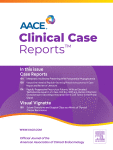
November
2022
Radiofrequency Ablation of Recurrent Metastatic Papillary Thyroid Cancer to a Lymph Node
In the cases where surgery is contraindicated or refused by the patient for recurrent thyroid malignancy, ATA guidelines propose radiofrequency ablation (RFA) as a possible treatment option. RFA has emerged as an effective treatment option for various solid types of cancer
Shahzad Ahmad MD, FACE, ECNU, Ian James Orozco MD, ECNU, Sheheryar Raashid MD, Zainab Hamid MBBS, Jules Aljammal MD, ECNU

February
2022
Management of Recurrent Laryngeal Nerve Injury During Radiofrequency Ablation of Thyroid Nodules
Jules Aljammal, MD, Iram Hussain, MD, Shahzad Ahmad MD

May
2021
Radiofrequency Ablation of Parathyroid Adenoma: A Novel Treatment Option for Primary Hyperparathyroidism
Iram Hussain, MD, Shahzad Ahmad, MD, Jules Aljammal, MD
Reviews

December
2022
Beyond the AJR: The Emerging Role of Radiofrequency Ablation in the Treatment of Low-Risk Papillary Microcarcinoma of the Thyroid
Michael L. Douek and David S. K. Lu

April
2022
American Association of Clinical Endocrinology Disease State Clinical Review: The Clinical Utility of Minimally Invasive Interventional Procedures in the Management of Benign and Malignant Thyroid Lesions
The objective of this disease state clinical review is to provide clinicians with a summary of the nonsurgical, minimally invasive approaches to managing thyroid nodules/malignancy, including their indications, efficacy, side effects, and outcomes.
Sina Jasim, Kepal N. Patel, Gregory Randolph, Stephanie Adams, Roberto Cesareo, Edward Condon, Tara Henrichsen, Malak Itani, Maria Papaleontiou, Leonardo Rangel, John Schmit & Marius N.Stan

December
2015
Radiofrequency ablation for thyroid nodules: which indications? The first Italian opinion statement
Nodular thyroid disease is a very common finding in clinical practice, discovered by ultrasound (US) in about 50 % of the general population, with higher prevalence in women and in the elderly
Roberto Garberoglio, Camillo Aliberti, Marialuisa Appetecchia, Marco Attard, Giuseppe Boccuzzi, Flavio Boraso, Giorgio Borretta, ... more

June
2014
Ultrasound B-flow imaging in the evaluation of thermal ablation of thyroid nodules
The aim of percutaneous thermal ablation is to reduce the volume of benign thyroid nodules. B-flow imaging, a non-Doppler technology for blood flow imaging, provides a real-time visualization of vascularity, and gives accurate information on the vessel lumen in high spatial and temporal resolution. Little is known about the possible application of this new technique on thyroid nodules after thermal treatments.
Massimiliano Andrioli & Roberto Valcavi

March
2014
The peculiar ultrasonographic and elastographic features of thyroid nodules after treatment with laser or radiofrequency: similarities and differences
The aim of percutaneous thermal ablation with laser (LA) or radiofrequency (RFA) is to reduce the volume of benign thyroid nodules. Little is known about ultrasonographic and elastographic appearances of thyroid lesions after treatment.
Massimiliano Andrioli & Roberto Valcavi

September
2011
Thermal Ablation for Benign Thyroid Nodules: Radiofrequency and Laser
Although ethanol ablation has been successfully used to treat cystic thyroid nodules, this procedure is less effective when the thyroid nodules are solid. Radiofrequency (RF) ablation, a newer procedure used to treat malignant liver tumors, has been valuable in the treatment of benign thyroid nodules regardless of the extent of the solid component.
